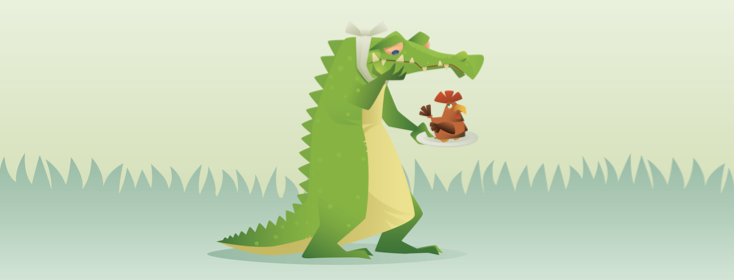Jawbreaker
Long ago, on a pretty autumn morning, I woke with a miserably aching right jaw. My first thought was that I had a toothache--a terrible thought indeed because I’ve always been ridiculously phobic about dentists. Talk about a bummer!
But a few seconds later it was clear my achy jaw had nothing to do with my teeth. I was glad until I tried to open my mouth. The ache turned into a thunderbolt of pain that centered where my lower right jaw connected to my skull, just in front of my ear. The bolt shot down into my chin and up the side of my head to my eyebrow. It was so sharp, so shocking, I cried.
Can RA cause jaw pain?
I’d been coping with severe rheumatoid disease for a couple of years when this happened. While I’d never dreamed it might affect my jaw - of all places - at that moment I realized that yes, my jaw was a joint, too. Why wouldn’t it cause a flare there, too?
I was a bit frightened. How in the world could I eat or even talk like this? But I went to work anyway. I spoke as little as I could get away with throughout the day. I couldn’t eat (I couldn't chew), but I had my coffee in the morning and heated some chicken broth in the office microwave for lunch.
Dinner at home that night was smashed peas with mashed potatoes and gravy. I had flares in that joint two more times that year and have never had another one. I'm very grateful for the reprieve.
What is the temporomandibular joint (TMJ)?
It wasn’t until many years later that I learned that RD often attacks the jaw, or more precisely, the temporomandibular joint (TMJ). It hinges to the skull in front of the ears. (Press your fingers there and open your mouth—you’ll feel it move beneath the skin.)
The TMJ is a synovial joint, like the knee, but it works differently. The knee bends in one direction only, like a hinge. The TMJ hinges, but it also rotates and slides forward and back as the mouth opens and closes. It moves sideways, too, so we can grind food up between our teeth. When we speak, we form many different sounds with our tongue thanks to the articulate movement of this very complex joint.
A thick, soft disk of cartilage cushions the joint where it attaches to the skull. A synovial capsule encloses it, filled with nourishing and lubricating synovial fluid. And just as it does with the other joints it attacks, it's here in the synovium that RD does its dirty work.
What happens RA attacks joints in the jaw
It tricks the body’s immune system into attacking that protective capsule of tissues. It causes inflammation, swelling, and pain. The synovial fluid thickens. It can harden over time into a substance called pannus; the cartilage and bone slowly erode away.
Over time, the joint starts to deform, causing dental and other problems, such as overbite, uneven tooth wear, headaches, and facial pain.
Tips for jaw pain relief
I used a heating pad to soothe my flared-up jaw, once I got home from work that first time. Cold packs can help as well. It almost goes without saying that resting the joint and eating soft foods while it’s inflamed helps, though doing so is mostly instinctive. Gentle massage and relaxation techniques like meditation can also help you cope with the pain.

Join the conversation